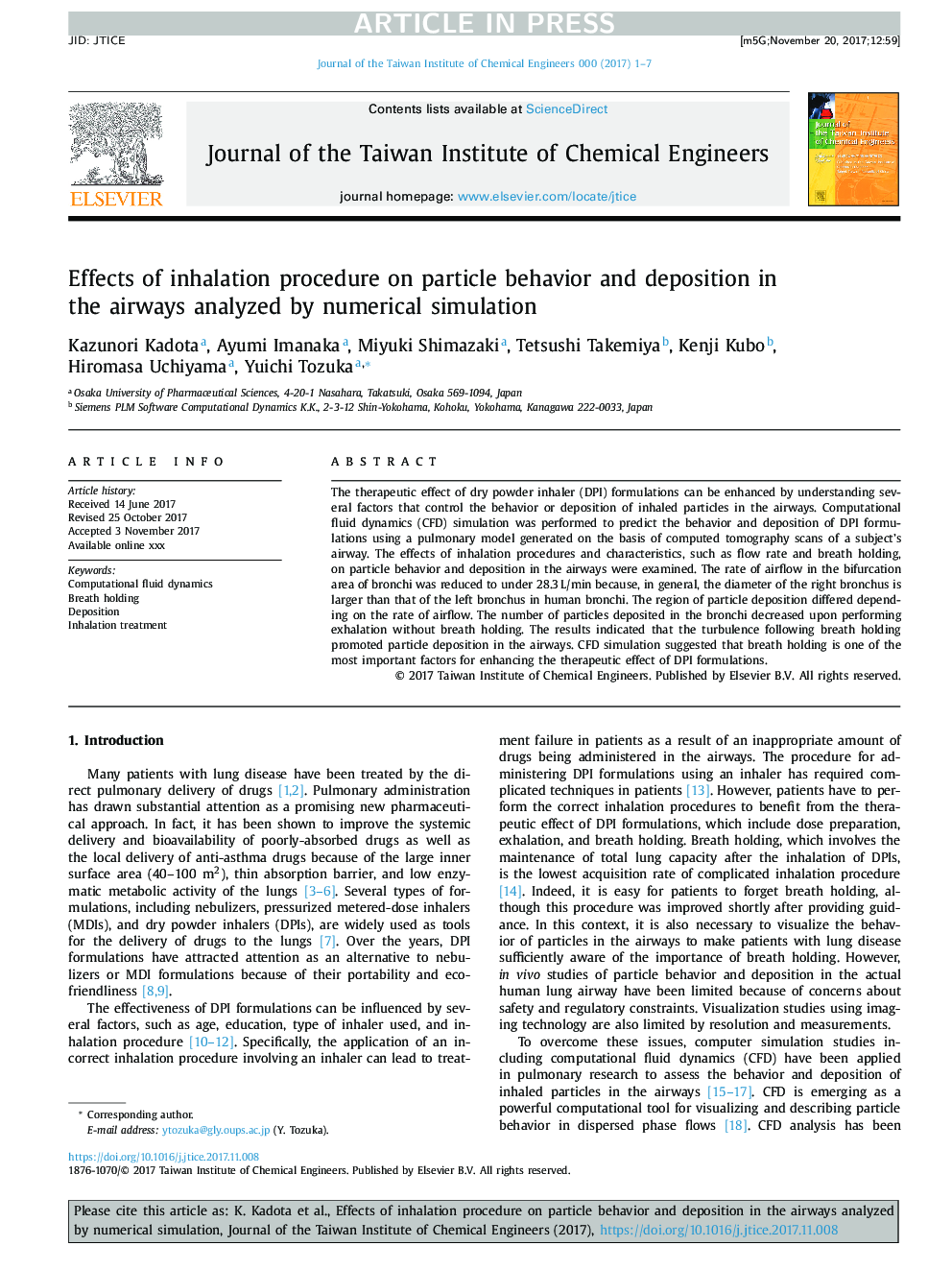| Article ID | Journal | Published Year | Pages | File Type |
|---|---|---|---|---|
| 7104509 | Journal of the Taiwan Institute of Chemical Engineers | 2018 | 7 Pages |
Abstract
The therapeutic effect of dry powder inhaler (DPI) formulations can be enhanced by understanding several factors that control the behavior or deposition of inhaled particles in the airways. Computational fluid dynamics (CFD) simulation was performed to predict the behavior and deposition of DPI formulations using a pulmonary model generated on the basis of computed tomography scans of a subject's airway. The effects of inhalation procedures and characteristics, such as flow rate and breath holding, on particle behavior and deposition in the airways were examined. The rate of airflow in the bifurcation area of bronchi was reduced to under 28.3â¯L/min because, in general, the diameter of the right bronchus is larger than that of the left bronchus in human bronchi. The region of particle deposition differed depending on the rate of airflow. The number of particles deposited in the bronchi decreased upon performing exhalation without breath holding. The results indicated that the turbulence following breath holding promoted particle deposition in the airways. CFD simulation suggested that breath holding is one of the most important factors for enhancing the therapeutic effect of DPI formulations.
Related Topics
Physical Sciences and Engineering
Chemical Engineering
Process Chemistry and Technology
Authors
Kazunori Kadota, Ayumi Imanaka, Miyuki Shimazaki, Tetsushi Takemiya, Kenji Kubo, Hiromasa Uchiyama, Yuichi Tozuka,
